After playing one season for the Edmonton Flyers of the Western Hockey League, scoring 59 points in 60 games, Ullman showed he was ready for the NHL and made his debut with the Detroit Red Wings in the 1955-56 season. He would play in 66 of the Red Wings 70 games, scoring a modest 18 points. He also appeared in an additional 10 playoff contests as Detroit made it to the Stanley Cup Finals.
Ullman found his stride the following year with 52 points in 64 games and never looked back. The following season of 1957-58 saw Ullman's first 20 goal season with 23, beginning a streak of at least 21 goals which would eventually reach 11 consecutive seasons. In addition he led the Red Wings in goals in 1961, 1965 and 1966. He was known as an excellent stickhandler and a tenacious forechecker, which no doubt helped him in the scoring column.
After seven seasons of scoring goals in the 20's, Ullman put together a career season in 1964-65 when he doubled his previous season's output with 42 goals to lead the NHL with three more than Bobby Hull and 13 more than third place and teammate Gordie Howe. In the overall race, Ullman came in second with 83 points to Stan Mikita's 87.
While the Red Wings made it to the Stanley Cup Finals five times during Ullman's 13 seasons in Detroit, they were never able to win the cup, which was won by Montreal or Toronto all but one time.
Despite having 30 goals for Detroit after just 58 games in 1967-68, Ullman was traded to the defending Stanley Cup champions Toronto in a blockbuster deal that sent Paul Henderson and Floyd Smith to the Maple Leafs in exchange for star Frank Mahovlich, Pete Stemkowski, Garry Unger and Carl Brewer.
Ullman would score an additional 5 goals for the Maple Leafs in their remaining 13 games for a total of 35, the second highest of his career despite the shock of being traded. Another 35 goals followed in 1968-69 (when he led the club with 77 points) and he scored 34 more in 1970-71 when he set an NHL career best 85 points to lead the Maple Leafs in scoring for the second time, a season which included two assists on this date in 1971 to make him only the fifth player in NHL history to score 1,000 career points, joining Howe, Jean Beliveau, former Detroit linemate Alex Delvecchio, and Hull in the exclusive club.
After eight seasons in Toronto, which concluded with a decidedly down season of just 35 points and 9 goals, which ended his streak of 20 goal seasons, Ullman's career came full circle as he returned to Edmonton in his native Alberta for 1975-76 when he signed to play for the Edmonton Oilers of the WHA who were more than happy to have the services of his veteran leadership.
Ullman was inducted into the Hockey Hall of Fame in 1982.
Today's featured jersey is a 1972-73 Toronto Maple Leafs Norm Ullman jersey. The Maple Leafs adopted this style in 1970, only with a laceup collar. They changed to today's v-neck style for the 1972-73 season before returning to the laceup collar for the next two seasons as Ullman's career with the Maple Leafs concluded.
After Toronto returned to using the v-neck collar in 1975-76, the jersey continued a long run through the 1991-92 season with the only change being the contentious addition of names on the back of th e road jerseys in 1977 and the whites in 1978. Maple Leafs owner Harold Ballard feared names on the back would harm program sales and famously protested the NHL rule by putting navy blue names on their navy blue jerseys!
Here is Ullman with Maple Leafs teammate Darryl Sittler in a commercial for some sort of breakfast sponge.
In this video, Tiger Williams, Lanny MacDonald and Ullman are honored in Toronto and conduct the ceremonial puck drop.


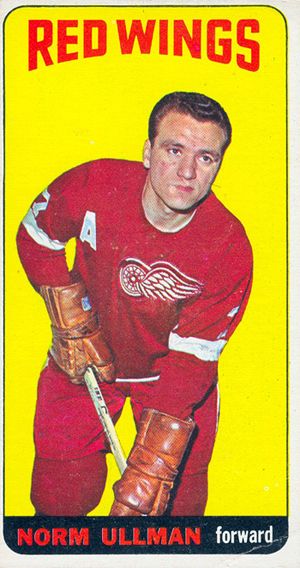

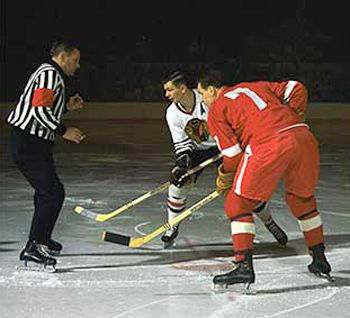
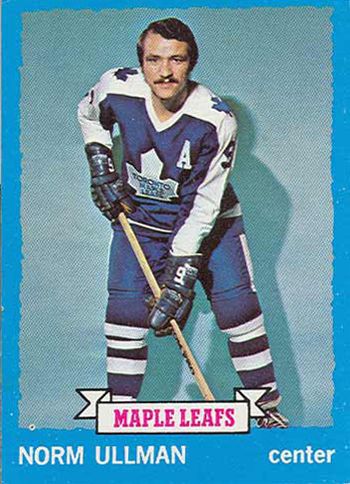
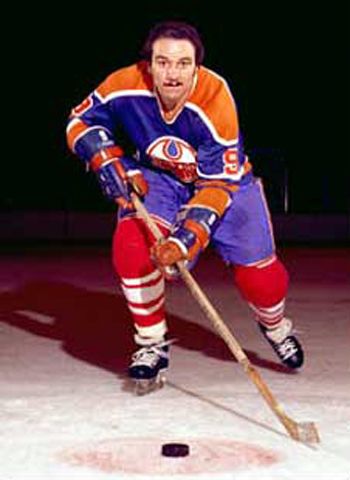
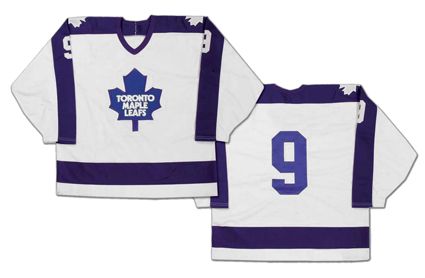










No comments:
Post a Comment
We welcome and encourage genuine comments and corrections from our readers. Please no spam. It will not be approved and never seen.